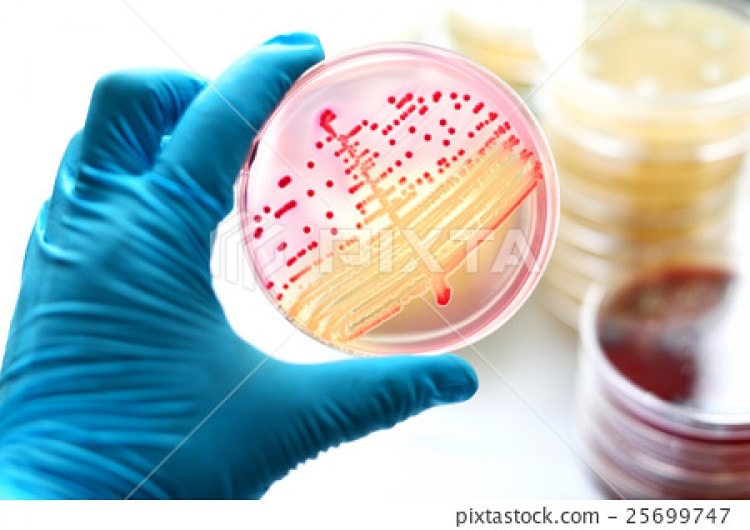
The first differential media, which was solid, and was formulated by Alfred Theodore MacConkey, in the 20th century, was MacConkey Agar. This is a differential and selective media, which is used for differentiation as well as isolation of the non-fastidious gram-negative rods, especially the ones that belong to the Enterobacteriaceae family, genus Pseudomonas.
Composition
MacConkey Agar is made up of the following ingredients, which include, 17 gm of peptone, 3gm of proteose peptone, 10 gm of lactose monohydrate, 1.5 gram of bile salts, 5 gram of sodium chloride, 0.03 gram of neutral red, 0.001 gram of crystal violet, 13.5 gram of agar, and 1 liter distilled water.
The principle of MacConkey Agar
MacConkey Agar is primarily used for isolating gram-negative bacteria as well as differentiating lactose fermenting bacteria from lactose non-fermenting gram-negative bacteria. Peptone and proteose peptones like meat and casein are responsible for providing all the essential nutrients, nitrogenous factors, as well as vitamins, which are necessary for the growth of the organisms. Lactose monohydrate is a fermentable carbohydrate source. The action of this particular medium is normally attributed to bile salts and crystal violet, which can inhibit the growth of most of the species of gram-negative bacteria. Sodium chloride plays an important role in maintaining the osmotic balance. Neutral red is the pH indicator, which turns red when the pH value is below 6.8 and becomes colorless when the pH value is more than 6.8. Agar is basically the solidifying agent.
MacConkey Agar and its uses
Given below is a list of the uses of MacConkey Agar.
- It is used for isolating gram-negative enteric bacteria.
- It helps in differentiating between lactose fermenting bacteria and lactose non-fermenting gram-negative bacteria.
- It helps in isolating intestinal pathogens and coliforms in biological specimens, water, and dairy products.
MacConkey Agar and its preparation
- 53 grams of the dehydrated medium has to be suspended in 1000 ml of purified or distilled water.
- It has to be boiled so that the medium completely dissolves.
- Next, it has to be sterilized by the method of autoclaving at the pressure of 15 lbs or 121°C for a period of 15 minutes.
- Next, you have to cool it to 50°C.
- After that, you have to mix it properly, before you pour into the Petri plates, which are sterile.
Result interpretation
The strains of lactose fermenting bacteria grow as pink or red and can be surrounded by the zone of precipitated bile. The color red is formed because of the acid production from lactose, absorption of the natural red color, and also the color change of dye when the medium’s pH level goes below 6.8.
The strains of lactose non-fermenting bacteria, like Salmonella and Shigella, are not only transparent but also colorless, and they are not responsible for altering the medium’s appearance.
Conclusion
It is important that you know about MacConkey Agar because not many people know about it. Read everything that has been mentioned in order to understand MacConkey Agar.
